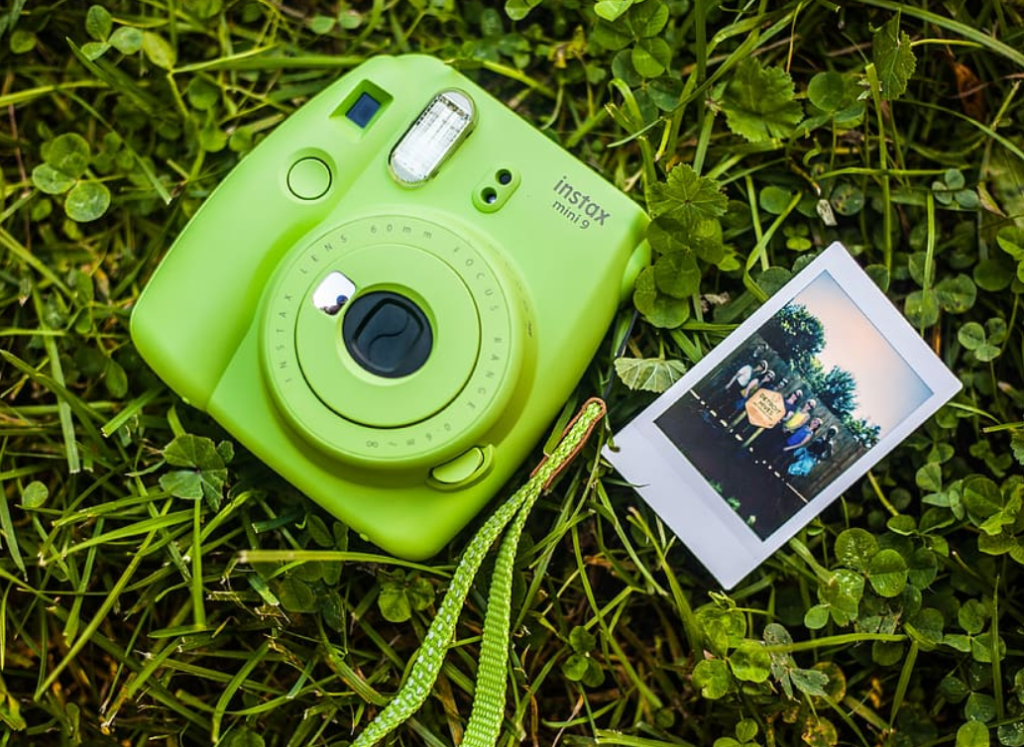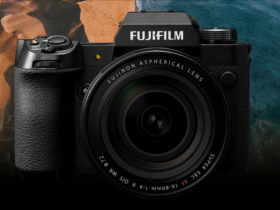Your Fujifilm Instax Mini 9, with its compact dimensions of 4.61 x 4.69 x 2.72″ and a lightweight of just 10.8 oz, is a delightful camera to carry around. It offers instant gratification with its INSTAX Mini film format, and its 60mm focal length and f/12.7 aperture lens bring subjects to life in vivid, colorful detail.
It even has a built-in flash with an effective range of 2.0 to 8.9′, along with a viewfinder magnification of approximately 0.37x. Not to mention the flexible exposure modes, allowing you to switch between automatic and manual, making it ideal for both novice and experienced photographers.
But what happens when this mini yet mighty gadget stops working? When your camera, which ordinarily operates seamlessly with a pair of AA batteries, fails to capture those precious moments?
This guide, “Fujifilm Instax Mini 9 Not Working: Issues and Solutions,” is the answer. It will walk you through some of the common issues you may encounter with your Fujifilm Instax Mini 9, along with their potential fixes, to ensure that your camera remains a reliable companion, ready to freeze memories at the click of a button. So, let’s delve into the world of troubleshooting and get your camera back up and running in no time.
Fujifilm Instax Mini 9 Not Working: Issues and Solutions
Now we’ll be discussing frequent issues that users encounter with their Fujifilm Instax Mini 9 cameras and how to fix them.
1. Incorrect Battery Placement and Battery Life.
We’re starting with a common but easily avoidable mistake: incorrect battery placement. When you insert the batteries into your Instax Mini 9 correctly, a light on the camera will illuminate as soon as you power it on. This light is essential for proper camera operation. If you find that the light is not turning on or is blinking, it’s time to double-check your batteries. A blinking light usually indicates that the batteries are too weak, and it’s time to replace them with fresh ones.

Remember always to pay close attention to the orientation of the batteries when inserting them, as this can make all the difference in getting your camera to work correctly. Both the batteries have opposite orientations in the holder, so make sure to double-check it.
2. Corrosion On The Battery Holder End Plates.
An often overlooked cause of Fujifilm Instax Mini 9 malfunctions is corrosion on the battery holder end plates. This issue can prevent your camera from functioning properly, and it’s important to understand how it happens and how to address it.
Corrosion occurs when the metal end plates of the battery holder come into contact with moisture or other corrosive substances, which can cause the metal to degrade over time. As the corrosion worsens, it can interfere with the electrical connections between the batteries and the camera, reducing or cutting off the flow of power. This, in turn, can lead to your Instax Mini 9 not working or functioning inconsistently.
To avoid this problem, it’s essential to keep your camera and its battery compartment clean and dry. If you notice any signs of corrosion on the battery holder end plates, gently clean them with a soft cloth or cotton swab dampened with a small amount of isopropyl alcohol. Allow the end plates to dry completely before reinserting the batteries and closing the battery compartment.
3. Using Non-Alkaline Batteries Can Lead To Fujifilm Instax Mini 9 Not Working.
Another factor that can lead to your Fujifilm Instax Mini 9 not working is the use of non-alkaline batteries. The Instax Mini 9 is specifically designed to work with alkaline batteries from the same brand. And using batteries that don’t meet this requirement can result in suboptimal performance or even failure.

Non-alkaline batteries, such as zinc-carbon or rechargeable nickel-metal hydride (NiMH) batteries, typically have lower voltage outputs and a shorter lifespan compared to alkaline batteries. As a result, they may not provide the consistent power required for the proper functioning of your Instax Mini 9.
Using non-alkaline batteries in your camera can lead to various issues, such as inconsistent flash performance, slower shutter speeds, or even a complete inability to power on the camera. To ensure the best performance and reliability, always use alkaline batteries from the same brand in your Instax Mini 9.
4. Physical Damage To Your Fujifilm Instax Mini 9 Can Lead To Its Not Working.
Physical damage to your Fujifilm Instax Mini 9 can also lead to the camera not working as it should. Accidents happen, and your camera may have experienced a fall or an impact with a hard surface. It can affect some of its internal components. As a result, the camera might malfunction or fail to turn on altogether.
If you suspect that your Instax Mini 9 has been damaged, one thing you can try is to perform a soft reset. To do this, turn the camera on, remove the batteries, and then reinsert them. This may help to reset the camera’s internal systems and potentially resolve any minor issues caused by the impact.

However, keep in mind that this method may not fix more severe damage or issues with the camera’s internal components. If your Instax Mini 9 still doesn’t work after attempting the reset, it’s best to contact Fujifilm customer support or visit an authorized repair center to have your camera professionally assessed and repaired.
5. Water Damage and Humidity Can Be A Cause Of Your Fujifilm Instax Mini 9 Not Working.
Water damage and high humidity can also lead to your Fujifilm Instax Mini 9 not working as intended. Like most electronic devices, the Instax Mini 9 can’t withstand water exposure or prolonged exposure to high levels of humidity. These conditions can cause internal components to corrode, short-circuit, or malfunction, ultimately preventing the camera from functioning properly.
To prevent water damage or humidity-related issues, it’s important to always keep your Instax Mini 9 in a dry and protected environment. Avoid using the camera in rainy or excessively humid conditions. And if your camera does get wet, immediately turn it off and remove the batteries. Allow the camera to dry completely before attempting to use it again.
If you suspect that your camera has been exposed to water or high humidity and it’s not working. It’s best to consult Fujifilm customer support or an authorized repair centre for further assistance. Attempting to fix the camera on your own may void the warranty or cause additional damage.
Now, we will look into some additional issues which you might face with FujiFilm Instax Mini 9 along with their solutions.
Some Other Issues With FujiFilm Instax Mini 9 and Their Solutions
1. Forgetting to Eject the “Dark Slide”
The most common issue that many Instax Mini 9 users face is forgetting to eject the “dark slide.” The dark slide is a black plastic cover that protects the film from being exposed to light when you first load a new film cartridge into the camera. If you don’t remove it properly, your first photo will be ruined.
To avoid this mistake, make sure to follow these steps when loading a new film pack into your camera:
- Locate the yellow dots on the film pack and the camera.
- Align the yellow dots on the film pack with those on the camera, and insert the pack gently.
- Turn on the camera by opening the lens.
- Press the shutter button to eject the dark slide.
By following these steps, you’ll ensure that the first photo you take with your new film pack won’t be wasted.
2. Accidentally Touching the Lens
The second common issue that Instax Mini 9 users may encounter is accidentally touching the lens while taking pictures. Touching the lens excessively can cause the camera’s light to turn off, making it impossible to take a photo. Even a slight touch can negatively impact your photos by creating dark edges at the top and bottom.
An example of this can be seen in a photo where the lens was deliberately touched while taking the picture. The resulting image has noticeable black bars along the top and bottom edges. To avoid this issue, be cautious when handling your camera and make a conscious effort not to touch the lens while taking photos.
3. Taking Photos in Low-Light Conditions
The fifth common mistake users make with their Instax Mini 9 is attempting to take photos in extremely low-light conditions. While Instax cameras are a lot of fun, they are not designed for capturing images in very dark environments, especially the Instax Mini 9.
Certain models, such as the Instax Mini 90, have a bulb function that can help with nighttime photography. However, if you try to take a picture in a poorly lit area with the Instax Mini 9, the flash may not reach your subject, resulting in dark and underexposed photos.
For example, a photo taken of a city at night with the Instax Mini 9 may turn out almost entirely black, with only a few bright spots visible. In contrast, a photo captured with a modern smartphone, like an iPhone, would likely produce a much better result in the same lighting conditions.
4. Taking Photos In Excessively Bright Conditions
Another common mistake users make with their Instax Mini 9 is taking photos in excessively bright conditions. While it may seem counterintuitive, because more light typically results in better photos, Instax cameras can struggle to handle too much light. This issue affects most Instax camera models due to the film’s sensitivity at ISO 800.
The Instax Mini 9 has a relatively fixed aperture and a maximum shutter speed of 1/60 of a second, which limits its ability to handle very bright situations. In comparison, modern smartphones like iPhones have much higher maximum shutter speeds (around 1/16,000 of a second), allowing them to handle a wide range of lighting conditions.
To avoid washed-out images, it’s best to avoid taking photos with your Instax Mini 9 when it’s too bright outside. However, if you’re determined to capture a shot in bright conditions, you can try an experimental approach by using sunglasses to cover the lens and reduce the amount of light entering the camera.
5. Opening The Film Door Before All The Film Has Been Used Up
Other common mistake that users make with their Instax Mini 9 is opening the film door before all the film has been used up. If you accidentally open the film door and see that there are still sheets of film inside, don’t panic! While the top sheet of film will certainly be wasted, the remaining sheets might still be usable.
The front sheet of the film acts as a shield, protecting the sheets behind it from exposure to light. So, if there is more than one sheet left in the cartridge, the chances are that the other sheets are still okay to use.
6. Neglecting To Pay Attention To The Film Counter
The final common mistake that users make with their Instax Mini 9 is neglecting to pay attention to the film counter. When you load a new pack of film, the counter will display 10, indicating the number of shots available. With each photo taken, the counter will decrease by one until it reaches zero.
To avoid disappointment, it’s crucial to keep an eye on the film counter. You wouldn’t want to gather your friends for a perfect photo opportunity, only to discover that you’re out of the film when you press the shutter button and nothing comes out.
As we wrap up this blog post on common Fujifilm Instax Mini 9 issues and solutions, our aim has been to provide you with the knowledge and guidance needed to enjoy your instant photography experience to the fullest. We hope that you were able to find the solution if your Fujifilm Instax Mini 9 is not working. By being aware of these potential pitfalls and knowing how to avoid them, you’ll be well on your way to capturing beautiful memories with your Instax Mini 9 camera!
- Also Read: Is Davinci Resolve Free? Is It Good for Beginners ?
- Also Read: 3 Cheapest 10-Bit Cameras You Can Buy
- Also Read: Export 5.1 Audio From Davinci Resolve (2 Ways)












Got a Question?
Find us on Socials or Contact us and we’ll get back to you as soon as possible.